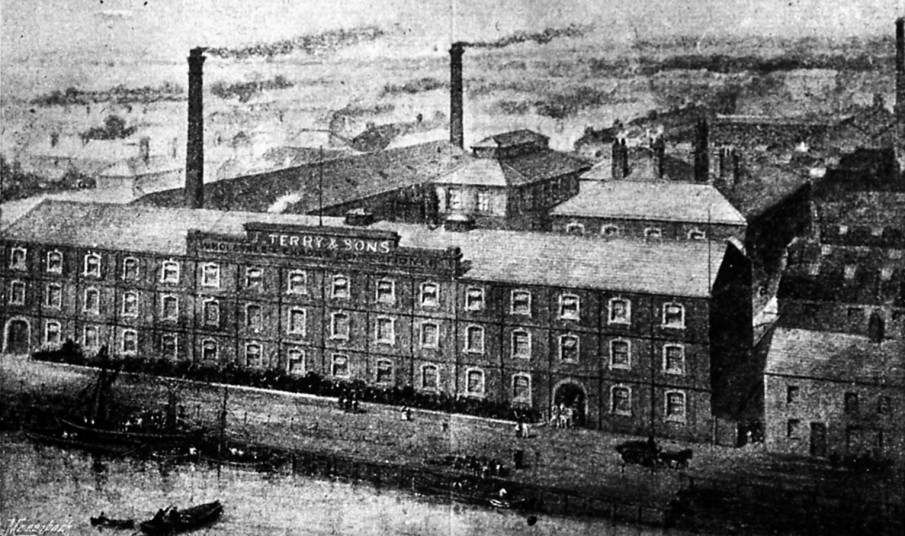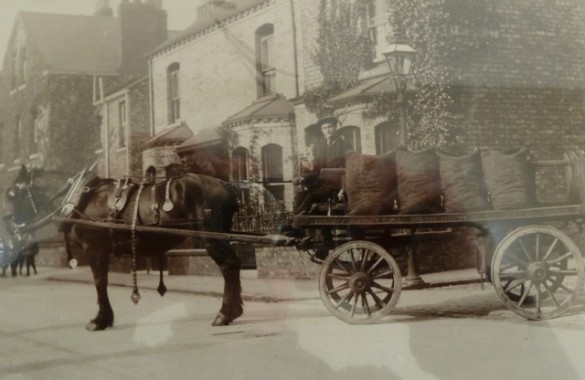23rd October 2019
Clementhorpe, York: Over 200 years of work and industry
Two of our members, John Stevens and Mave Morris, having been researching the industrial history of Clementhorpe for us. The results of their explorations are now all on our website. Click this link to find these.

Terry’s Confectionery Works around 1894 (Hugh Murray)
John writes:
If you look at maps of the Clementhorpe area at around the end of the nineteenth century, you will see a number of large buildings variously labelled ‘chemical manure works’, ‘confectionery works’, ‘thread mill’, ‘glassworks’, ‘shipyard’ and so forth. Where they once lay is now a quiet residential suburb, but we can still see hints of the area’s industrial past in the street pattern, names and signs, the street furniture, as well as a couple of surviving industrial buildings that have been converted for residential use. These are Clementhorpe Maltings – now The Maltings – on Lower Ebor Street and the Co-operative Society Works – now Waterfront House – on Terry Avenue.
We set out to trace this history of industrial development, and to look at the way in which employment had changed through the centuries. We wanted to find out why all these trades and industries had grown up and apparently flourished in Clementhorpe, and what had happened to them since. We wanted to find out about some of the enterprising people responsible for their growth. But, we really wanted to know what a ‘chemical manure works’ was!
The industrial development of Clementhorpe was minimal until the mid nineteenth century, apart from a long-established tradition of shipbuilding along the banks of the River Ouse. Throughout the remainder of the nineteenth century, and into the first half of the twentieth century, many different industries were established. Some grew into substantial enterprises, while others fell by the wayside fairly quickly.
In its industrial heyday Clementhorpe must have been a hive of activity. Raw materials arrived by boat, together with the coal to heat and power the manufacturing processes. Horse-drawn vehicles were everywhere. Many of the activities were highly polluting and, together with all the smoke, must have made a very unpleasant environment. We get hints of this from contemporary news items about the disgusting state of Clementhorpe Beck, the widespread keeping of farm animals, the outbreaks of disease and the arrest of a number of businessmen for antisocial and illegal activities.




